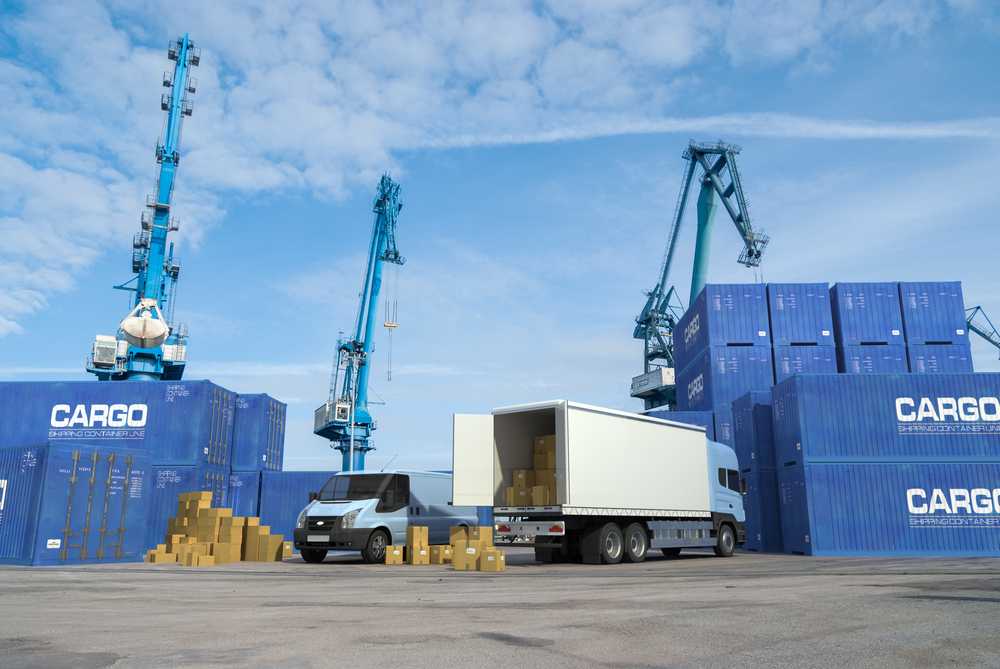At some stage during your search for a shipping service, you will likely have come across the term cross-docking. But what is it exactly?
Cross-docking is a supply chain management strategy that entails unloading inbound cargo vehicles directly onto departing delivery vehicles, essentially eliminating traditional warehouse storage practices to cut labor costs and increase efficiency. This streamlined shipping approach is most practical in situations where time is scarce and budgets are slim.
As a distribution tactic, while cross-docking is not exactly a new approach to logistics, its popularity continues to grow. The reasons for its popular use are clear, especially when considered in light of how well cross-docking supports just-in-time delivery methods and other supply chain strategies like collaboration take and hold.
Cross-docking is fundamentally a warehouse procedure. However, its success strongly depends upon eliminating the storage element as a factor in distribution. This means that operations managers must be adept at careful coordination through the use of continuous real-time information flow between manufacturers, distributors, and end customers.
Cross-docking broadly defined
Cross-docking describes an approach to supply chain management that involves the transfer of products and goods from an inbound carrier to an outbound transport vehicle without materials ever entering the warehouse for storage purposes. Hence, the freight “crosses the docks,” bypassing the warehouse, as goods transfer from the receiving docks directly to the shipping dock areas for outbound transport.
At first glance, this broad definition might seem like a simple process. But product tracking and coordination complicate the procedure, and distributors have several variations of the cross-docking available to them. The initial shipper, usually the manufacturer, is primarily responsible for successful cross-docking at their distributor’s facilities.
Good cross docking practices can result in substantial inventory savings because it eliminates the need to store products onsite. Cross-docking allows you to do away with the unnecessary routing of goods to storage areas that will be retrieved from racks and subsequently brought back to the docking areas again.
Business owners favor cross-docking because it presents the opportunity to eliminate inventory holding expenses while the cost of materials handling is drastically reduced. Distributors, of course, prefer cross-docking because it expedites shipments and improves customer satisfaction.
Common types of cross-docking
There are several approaches to cross-docking businesses can take. Here are a few of the most common strategies:
Full pallet load operation – The most basic and cost-efficient approach, this procedure involves receiving an incoming load. These loads are then separated and labeled according to their outbound shipment routes.
The individual pallets are sorted and re-distributed to outgoing trucks scheduled to deliver the goods to various destinations. The typical example is discoverable in less-than-truckload terminals where products move from one cargo vehicle to another without touching the floor.
Caseload order makeup – In this cross-docking strategy, inbound materials arrive at the dock to be sorted and marked by stock-keeping units (SKUs). The goods are separated by customer order which, generally speaking, requires pallet loads to be broken down into individual boxes. The packages are then re-palletized before the new loads are directed to their respective outbound vehicles.
Hybrid cross-docking – This approach involves the blending of materials in storage with incoming goods processed at the docks. The newly palletized materials are subsequently transferred to the outbound trucks while some of the incoming products may be stored temporarily instead of being cross-docked.
Opportunistic cross-docking – “Hot” items are categorized as either late or significantly back-ordered goods. Warehouse operations managers prefer to cross-dock these shipments instead of placing them into inventory to save time. These products may be cross-docked upon receipt or combined with other items from storage for shipment.
IT and supply chain management
Cross-docking aims to simplify today’s complicated supply chain through improved and more efficient collaboration. Minimizing inventory is the key element that links the supply and demand sides of the chain, both of which are under increasing pressure to improve efficiency and lower operational costs while bringing more value-add services to the end customer.
Because information sharing and collaboration are so critical among trading partners, successful cross-docking has become highly dependent upon technological tracking and tracing solutions. Manufacturers and distributors alike rely upon vital information technologies like RFID tracking and tracing, production scheduling, advance ship notices, and transportation production management systems.
Warehouses, where cross-docking takes place, require key warehouse management systems (WMS) like SAP Business One for small companies to assist with daily planning and execution. Without these essential tools, adequate cross-docking wouldn’t be possible. Distribution centers would lack the necessary data to determine future orders or acquire knowledge of the ongoing destinations of incoming items before they’re received.
Technology provides optimal visibility into all dock and yard storage locations, allowing for precise cross-docking planning that avoids costly mistakes like missed departures and lost merchandise. Owing to the enhanced transparency, vendor and customer relationships also improve through advanced order management technologies, paving the way for more efficient operations and positively impacting everyone involved.
When to use cross-docking
Cross-docking is most suitable for the following products and merchandise:
- Back-ordered items
- Seasonal merchandise
- High-volume products in continuous demand
- High-dollar materials
- Goods with short lead times
Cross-docking may be less than optimal for the following materials:
- Bulky, difficult to handle items
- Early arriving seasonal items
- Low-value products in low demand
- Goods purchased in bulk
- Products with long lead times
Enhance your productivity with WiSys
WiSys is known for its cutting-edge technology and for helping businesses get the most out of their automated processes. To find out how you can improve your cross-docking with the latest supply chain technologies, call 770-955-3550 today.


